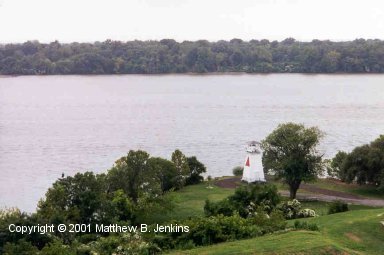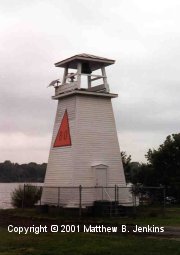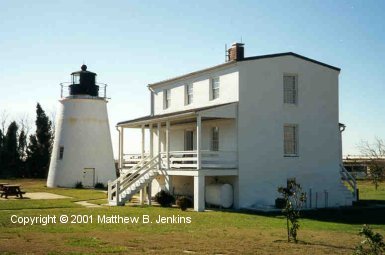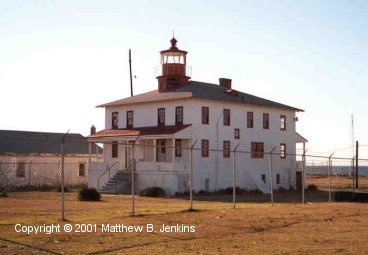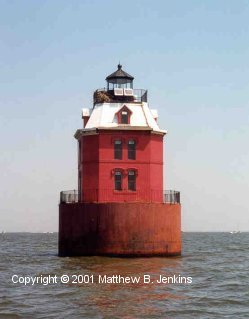
Sandy Point Shoal Light
North of Annapolis, MD
cir. 1883
An earlier, Sandy Point Light had been built on land in what is now Sandy Point State Park just north of Annapolis, MD. However, it was not well situated. This newer caisson light was constructed without mishaps in 1883, and is visible from the Chesapeake Bay Bridge. It was electrified in 1929 and fully automated in 1963. In its heavily trafficked location it was open to vandalism and in 1979 the Coast Guard discovered that someone had completely smashed the handmade 19th century crystal Fresnel lens, apparently with a baseball bat. (It has been replaced with an acrylic lens.) Major restoration work was undertaken by the Coast Guard in the late 1980s and early 1990s.
(U.S. Coast Guard Historian's page - Sandy Point Shoal Light)
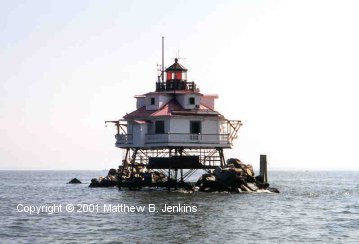
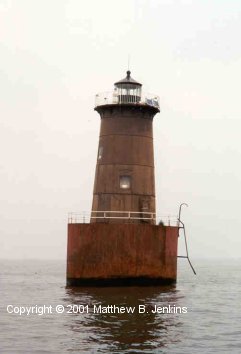
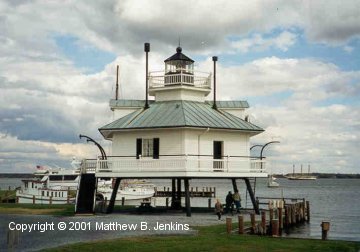
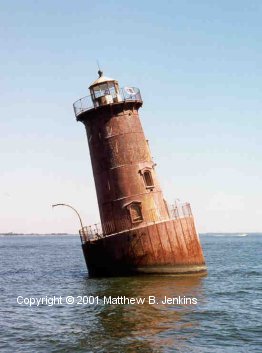
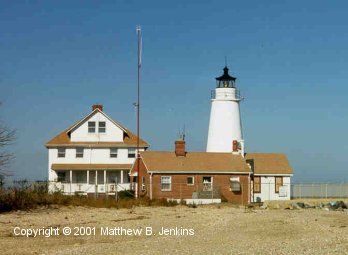
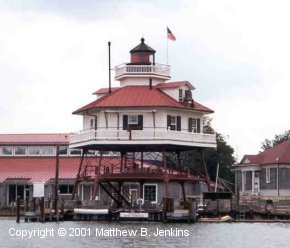
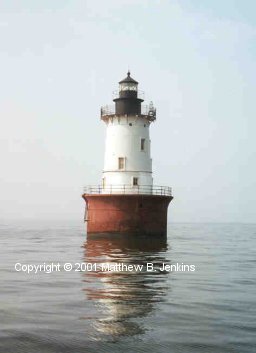
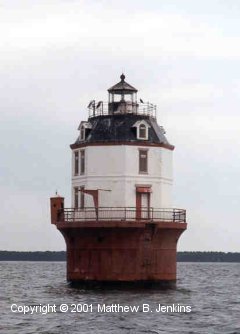
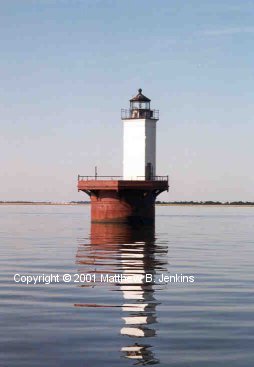 Solomon's Lump Light
Solomon's Lump Light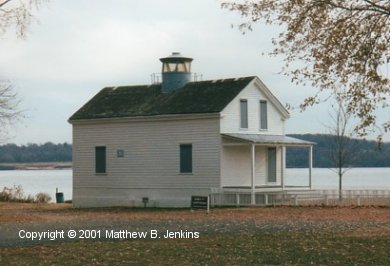 Jones Point Light
Jones Point Light